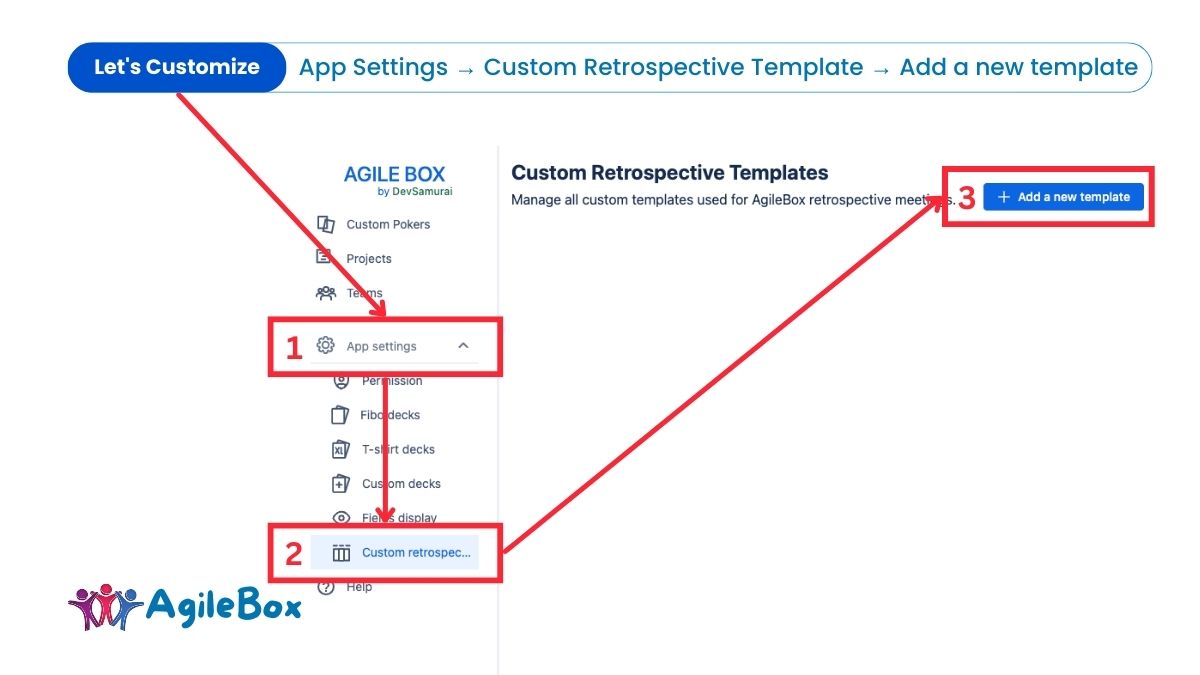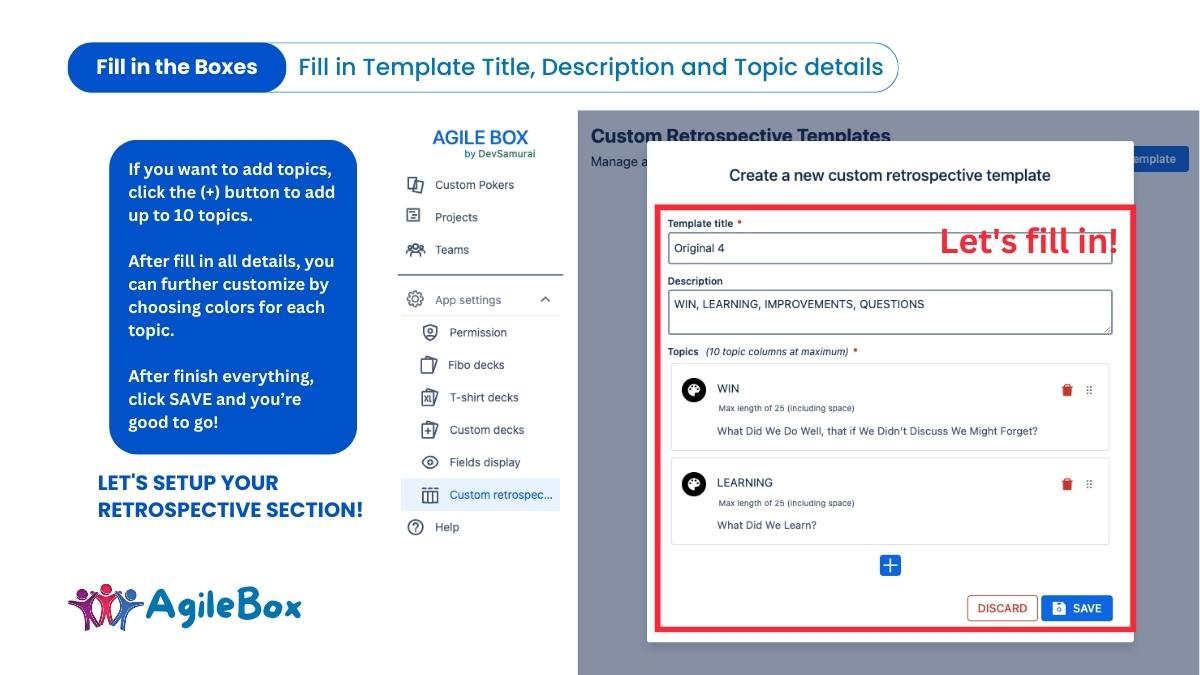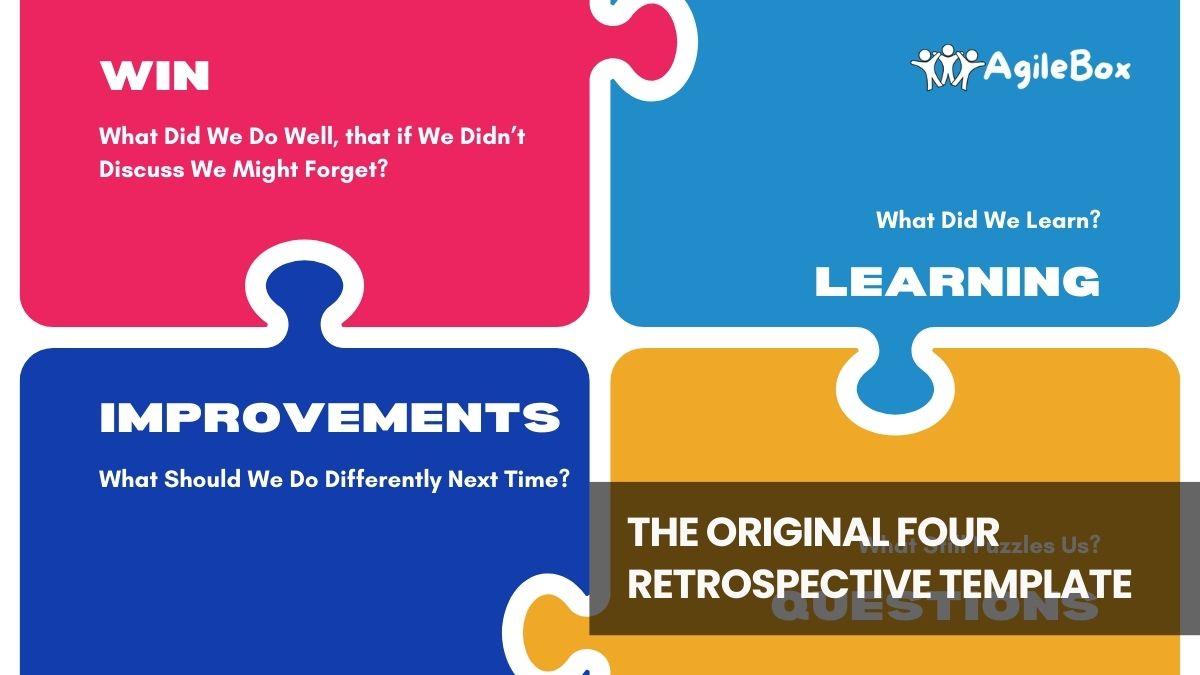One of the most classic approaches to retrospectives, the Original 4 template, was introduced by software pioneer Norman Kerth in his landmark book Project Retrospectives: A Handbook for Team Reviews. If you’re serious about continuous improvement, retrospectives are like your team’s secret sauce—they keep everyone aligned, inspired, and on the same page. This time-tested method offers a simple, powerful way to reflect on past work, celebrate wins, identify learning opportunities, and explore unresolved questions.
Ready to dig into the Original 4 template? Let’s see how each of these four questions can guide your team toward growth and keep the momentum going.
What is the Original 4 Retrospective Template?

The Original 4 Retrospective template is built around four key questions that spark honest reflection and have since become the basis for many other retrospective frameworks. Think of it as the template that inspired countless variations, like “Start, Stop, Continue” and the “4 Ls” (Liked, Learned, Lacked, Longed For).
Here’s an overview of each question in the Original 4 template and how they can help your Agile team reflect, learn, and grow together.
1. Wins: What Did We Do Well?
Let’s start with the good stuff! This question prompts team members to highlight successes from the last sprint or project. Reflecting on “Wins” isn’t just about celebrating what went right—it’s about recognizing the team’s efforts and noting practices that worked well. By discussing these wins openly, teams can:
-
Boost morale and set a positive tone for the session.
-
Identify practices worth repeating in future sprints.
-
Recognize and reinforce individual and team achievements, motivating everyone to keep up the good work.
Examples of Wins:
-
Example 1: Successfully implemented a new code review process that reduced bugs by 30%.
-
Example 2: Team collaboration improved noticeably during daily stand-ups.
-
Example 3: Completed a major project milestone ahead of schedule, thanks to effective sprint planning.
By kicking things off with “Wins,” the original 4 template helps teams recognize the value of their efforts and build on strengths.
2. Learning: What Did We Learn?
The “Learning” question taps into one of Agile’s core principles: continuous improvement. Reflecting on insights from recent work helps the team become more adaptable and resilient. Openly sharing lessons learned encourages the team to:
-
Foster a growth mindset where everyone feels encouraged to learn from every sprint.
-
Surface insights that can be applied to future sprints and projects.
-
Think critically about both wins and challenges, reinforcing a culture of learning.
Examples of Learnings:
-
Example 1: Realized the importance of defining tasks clearly at the start of each sprint.
-
Example 2: Discovered a debugging tool that saved significant time.
-
Example 3: Learned that prioritizing tasks more effectively helped meet deadlines without stress.
In the Original 4 template, the “Learning” question is about crystallizing valuable takeaways and ensuring they guide future work.
3. Improvements: What Should We Do Differently Next Time?
This question is where your team can start planning for the future. Reflecting on what could be improved keeps the team moving forward and encourages everyone to think critically about ways to work smarter. In the Original 4 template, this question invites teams to:
-
Identify process inefficiencies and brainstorm solutions.
-
Take ownership of their roles in improving team workflows.
-
Encourage open, constructive feedback, building a supportive environment for change.
Examples of Improvements:
-
Example 1: Allocate more time for testing phases to reduce post-release issues.
-
Example 2: Minimize task-switching during sprints to improve focus.
-
Example 3: Increase communication with stakeholders to ensure alignment on project expectations.
The “Improvements” section in the Original 4 template isn’t just about fixing mistakes—it’s about creating a roadmap for better results next time.
4. Questions: What Still Puzzles Us?
Not everything can be resolved by the end of a sprint, and that’s where the “Questions” prompt comes in. This part of the Original 4 template provides a safe space for team members to voice uncertainties, challenges, or lingering questions. Discussing these openly helps the team:
-
Identify knowledge gaps and areas needing further investigation.
-
Encourage curiosity and a culture of ongoing exploration.
-
Foster an environment where team members feel comfortable seeking help.
Examples of Questions:
-
Example 1: How can we improve task estimation accuracy for future sprints?
-
Example 2: What tools can we use to enhance remote collaboration?
-
Example 3: How can we balance workloads better to avoid burnout?
The “Questions” section of the Original 4 template encourages teams to embrace the unknown and stay curious about finding better solutions.
Why the Original 4 Template is a Great Starting Point
The Original 4 template is a perfect entry point for both new teams and seasoned Agile pros. Its straightforward, flexible format provides a versatile foundation for any retrospective. Many newer templates build on this structure, so understanding the Original 4 template gives your team a solid grounding in effective reflection.
If your team enjoys experimenting with other formats and variety, try switching or mixing other templates from time to time to keep retrospective sessions fresh, engaging and less repetitive—especially at the end of a big project or on a quarterly basis. Of course, returning to the Original 4 template periodically can reinforce essential goals.
→ Explore this post for more templates!
How to Use the Original 4 Retrospective Template in AgileBox
AgileBox makes it easy to add and customize any template to suit your team’s needs. Click here for a detailed guide on how to setting it up, but here’s a quick guide:
If you have AgileBox installed already, lovely! Skip to Step 2!
Step 1: Install AgileBox for Jira from Atlassian Marketplace
Click here to reach AgileBox on Atlassian Marketplace!
Then click Try it Free!

Step 2: Access to AgileBox Settings
To create custom retrospective templates, you have to be an app admin. Go to Apps → AgileBox → App Settings → Custom Retrospective Templates

Step 3: Create Your Customized Template!
Go to App Settings → Customize Retrospective Template → Add a new template

Step 4: Fill in the Details!
Fill in all details, you can further customize by choosing colors for each topic. If you want to add topics, click the (+) button to add up to 10 topics. After finish everything, click SAVE and you’re good to go!

And voila, you’re done! Let’s Retrospect!
→ Ready to try it? Click HERE!
Let’s Reflect, Discuss and Suggest with AgileBox!
With AgileBox, setting up and customizing the original 4 template for your team is a breeze. You can tailor it to fit your unique needs, allowing team members to leave comments together in real-time or whenever it’s convenient for them. Plus, reflections stay anonymous until everyone’s had a chance to share, fostering a comfortable, open environment for honest feedback.
Once everyone’s reflections are in, the team can vote on which topics need the most attention. AgileBox’s intuitive voting system highlights the most crucial discussion points, making it easy to focus on what truly matters. Together, you’ll address these high-priority items and set clear action steps to drive real improvements.
Whether you’re just starting with retrospectives or you’re a seasoned Agile practitioner, the original 4 template in AgileBox is a powerful yet simple tool to strengthen team communication, drive growth, and continuously improve your workflow.
→ Try Retrospective in AgileBox and see how it transforms your team retro! And for more insights into Agile practices, bookmark our blog and follow us on our social media channels for regular updates on tools and techniques to boost team collaboration.



